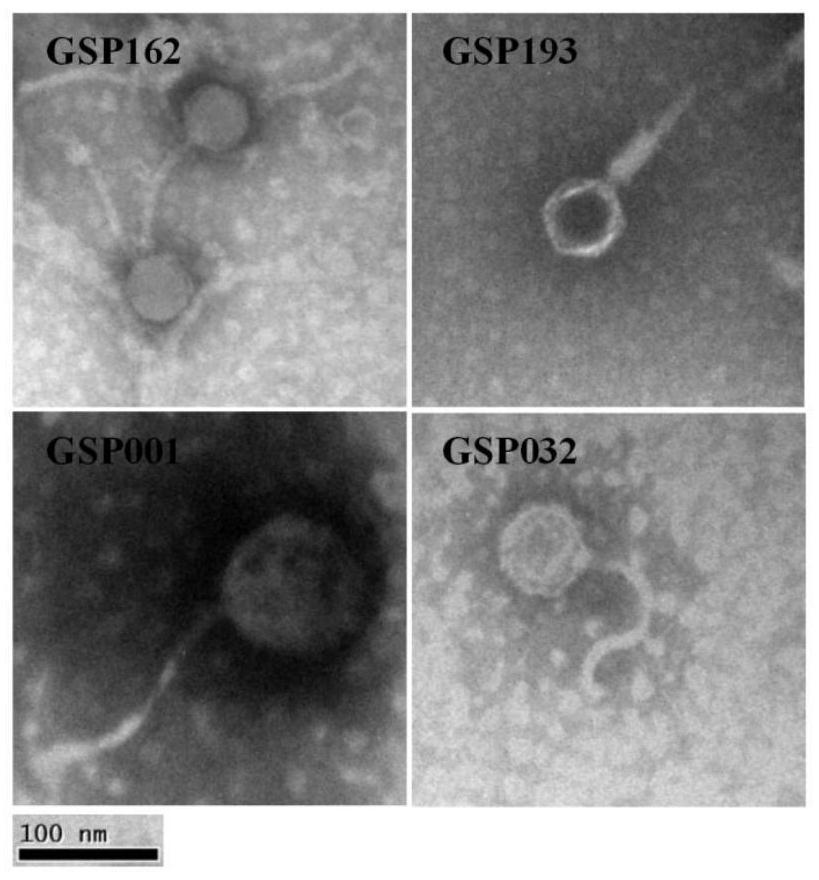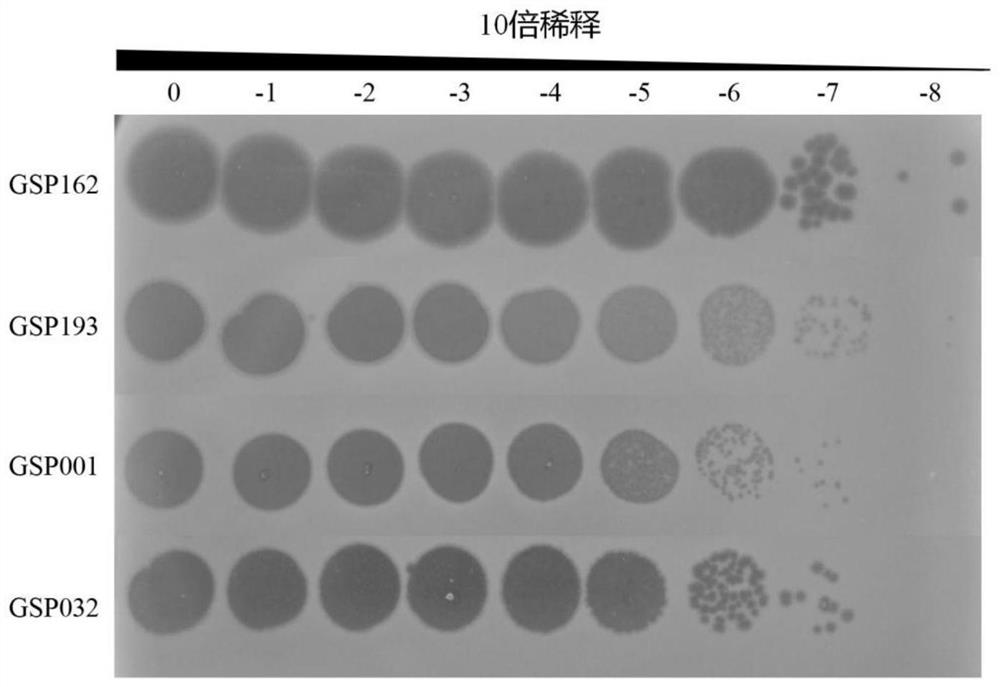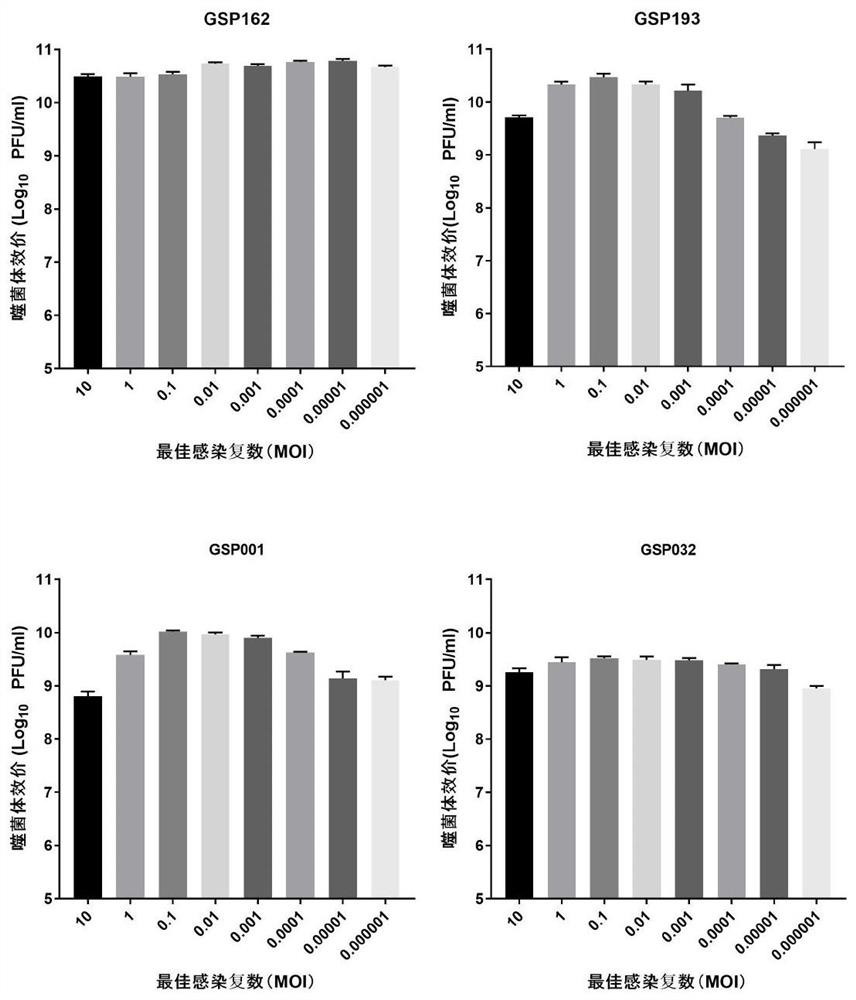Salmonella phage composition and application thereof
A technology of Salmonella and phage, applied in the direction of virus/phage, application, medical raw materials derived from virus/phage, etc.
- Summary
- Abstract
- Description
- Claims
- Application Information
AI Technical Summary
Problems solved by technology
Method used
Image
Examples
Embodiment 1
[0047] (1) Isolation of phage:
[0048] Fecal and sewage samples were collected from farms in different parts of the country. The host bacteria for the isolated phages was Salmonella Enteritidis SE006. Salmonella Enteritidis SE006 was isolated from poultry livers in our laboratory and preserved, and was preserved in Chinese typical culture on January 20, 2022 The collection center, the preservation number is CCTCC NO: M 2022101.
[0049] Preliminarily filter the collected sewage with filter paper to remove large solid impurities, take out 30ml of the filtered sewage sample, put it into a 50ml centrifuge tube, centrifuge at 10,000g for 10min, and filter the supernatant with a 0.22um pore size sterile filter as phage proliferation. The mother liquor was stored at 4°C until use.
[0050] Inoculate Salmonella SE006 in LB medium, shake at 37°C to culture to logarithmic growth phase, take 5ml of filtered supernatant, mix 2.5ml of host bacteria and 10ml of LB medium, and shake at 37...
Embodiment 2
[0062] In order to identify the host receptors adsorbed by the phages isolated in Example 1 to infect Salmonella, construct a mutant library of Salmonella SE006, adopt the method of double-layer plate spotting, and take 10 μl of phage liquid to spot on double-layers of each bacterial mutant. On the layer plate, placed in a 37 ℃ incubator for 12 hours, observe whether there is plaque, and determine its receptor. The results are shown in Table 1. The receptor of GSP162 phage is the O antigen of LPS, the receptor of GSP193 phage is LPS core polysaccharide, the receptor of GSP001 phage is the outer membrane protein BtuB, the receptor of GSP032 is the outer membrane protein TolC and The core polysaccharide portion of LPS.
[0063] Table 1 Receptor identification of bacteriophage
[0064]
[0065] Note: + means infectable; - means non-infectable.
Embodiment 3
[0067] Mix 1100 μl of the bacterial liquid cultured overnight in Example with the semi-solid medium and pour it into the LB solid medium to make a double-layer plate, dilute the phage 10-fold gradient to different concentrations, and drop 10 μl of the phage of different concentrations into the double-layer. On the plate, after drying, incubate upside down at 37°C for 6-12 hours, and observe the formation of the plaques of the gradient dilution on the plate. The result is as figure 2 As shown, the selected 4 strains of Salmonella phage grew well on the double-layer plate and were clear and transparent. With the serial dilution, a single plaque of the phage could be observed at last.
PUM
| Property | Measurement | Unit |
|---|---|---|
| Titer | aaaaa | aaaaa |
Abstract
Description
Claims
Application Information
 Login to View More
Login to View More - Generate Ideas
- Intellectual Property
- Life Sciences
- Materials
- Tech Scout
- Unparalleled Data Quality
- Higher Quality Content
- 60% Fewer Hallucinations
Browse by: Latest US Patents, China's latest patents, Technical Efficacy Thesaurus, Application Domain, Technology Topic, Popular Technical Reports.
© 2025 PatSnap. All rights reserved.Legal|Privacy policy|Modern Slavery Act Transparency Statement|Sitemap|About US| Contact US: help@patsnap.com



